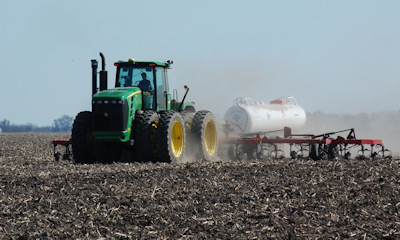
Waiting just a little bit longer to lock in that spring fertilizer purchase? You’re not alone, says Joe Dillier, Growmark, Plant Food Director.
”It looks like there’s a lot of nitrogen to go on this spring,” Dillier predicts, based on projected corn acres and total fall-applied ammonia.

TIME TO BUY: “I believe fertilizer prices have reset,” says Joe Dillier, Growmark Plant Food Manager. “There’s some pretty good values out there. I think you’ll be pleasantly surprised when you talk to your dealers.”
Dillier admits waiting to lock in spring fertilizer was a smart decision. Prices have consistently dropped since last August due to adequate supply and lower demand. However, planting season is approaching and holding out any longer could impact price and availability. “We’re a seasonable commodity. You can wait, wait and wait, until the day you can’t. There are times when the market just can’t get it (fertilizer) in position fast enough.”
Dillier points to the dramatic fertilizer price increase in spring 2012 as an example. UREA prices doubled when demand shot up and products weren’t where they needed to be. Moving product from oversea manufacturers to the Port of New Orleans, and then to your local supplier takes several weeks.
That said, a repeat of 2012 is not likely.
“We don’t have the worldwide demand that would cause doubled prices, but the market seems to be under bought,” says Dillier. “If I want to have product in Peoria for Evergreen FS to have available, I can’t wait for March 15. I have to make those decisions before now, or now, or very close to now.”
John McGillicuddy, McGillicuddy Corrigan Agronomics, agrees it’s time to make some decisions. “Dealers are not filling up their nitrogen tanks. There are a lot of half-full nitrogen tanks in the Midwest. That’s not unusual. You buy it; they put it in the tank. To make sure you have your pre-plant needs, commit by the end of February.”
So experts agree farmers made the right call: waiting for better input prices in a low market is a win. But they also agree it’s time to make the move.
“It looks like we could have a little crunch coming up. We have a more extreme situation today than I’ve seen in a long time,” says Dillier. “Farmers have good value today, right now. And that’s a good buy.”
About the Author(s)
You May Also Like




